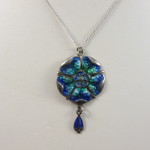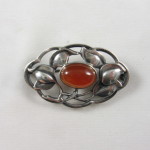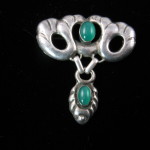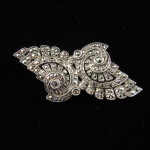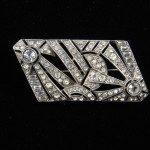The terms “Vintage”, “Antique”, and “Estate” are frequently used describe second-hand merchandise. These terms are often used incorrectly, or with intent to deceive. Here are the definitions of these terms and a few caveats:
Antiques – Antiques are items that are 100 years old, and older. This definition is accepted in the trade, but also has important legal and financial implications.
In the United States (and some other countries) no import duty is paid on antiques so you can save a lot of money if you know that your purchases are antique. This applies to items acquired on a buying trip, vacation, or online purchase so get a receipt from the seller stating that it’s an antique or, if you buy an antique online from a foreign seller, make sure they describe it as an antique on the customs form. More information can be found in the Code of Federal Regulations, Title 19 Part 10, Section 10.53.
As of this writing in 2014 the NEWEST items that can be considered antique are from the Edwardian era, which is named for the rule of King Edward VII in England (1901-1911). Several styles are concurrent with, or overlapping, the Edwardian era including Art Nouveau, Arts and Crafts, Edwardian (as a style descriptor), Jugendstil, Secessionist, and Wiener Werkstatte. Some of these design movements started prior to the Edwardian era and continued through it, and some extended slightly afterward but, in the absence of a date on an item, it is pretty safe to assume that original items in these styles (as opposed to reproductions) qualify as antiques.
Vintage – Items that are less than 100 years old, but more than 20 years old, are considered vintage. While this ‘older than 20 years’ delineator is not a hard date in the way that ‘100 years and older’ is for antiques, most flea markets and vintage shows use 20 years old as a cut-off point for calling something “vintage”. For those of us who lived through the ‘90’s it’s scary to think that items from the first half of that decade are already considered vintage.
Looking at it from a stylistic point of view, the OLDEST style that is still considered vintage is Art Deco since the Art Deco era began in about 1920 and continued through about 1940. With the popularization of the style dating from the Exposition International des Arts Decoratifs in 1925, this means that in about 10 years Art Deco items will start to be legitimately referred to as “antique”, slightly sooner if you have proof that the piece was from the earliest part of the Art Deco era and slightly later if it’s from the latter part of the era.
Estate – Estate means anything that comes from the sale of someone’s estate, usually because of their death. Estate sales and estate auctions are terrific sources for buying vintage and antique items (as well as useful household goods), however the term “estate” means nothing in terms of age. Remember, old people buy new things so just because something is from an estate sale doesn’t means it’s not new. The tool chest and kitchen appliances shown below are from an estate auction so technically they are “estate” items, but this doesn’t mean they are particularly old or collectible.
I’ve frequently seen new jewelry described as “estate” with the intent to deceive buyers into believing that it is older than it actually is, particularly online. If the detailed description doesn’t go into more detail about the age of a piece ask the seller, and if you aren’t satisfied with the answer, assume that they are selling something new or nearly new.
A legitimate use of the term is when jewelry stores describe themselves as “Estate Jewelers”; it is an elegant term that communicates in a single word that they sell both vintage and antique jewelry. Just remember that some Estate Jewelers also carry new jewelry in antique styles, so make sure that you clearly understand whether you are buying an older piece or a reproduction.
ShareFollow


